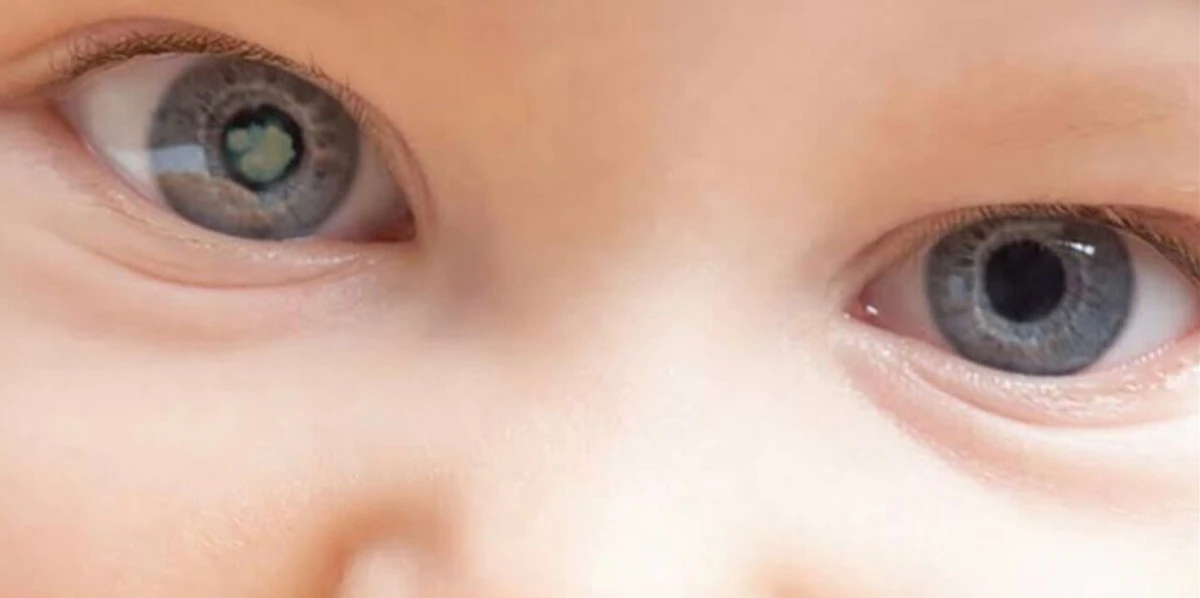Eye health is especially important during the early stages of life. Since visual development progresses rapidly in the first years after birth, eye problems occurring during this period can lead to permanent visual impairments. Congenital cataract is a clouding of the eye’s lens that is present at birth or noticed within the first months of life. This condition can hinder vision in infants and may lead to permanent vision loss if left untreated.
Congenital cataract is one of the leading causes of childhood blindness. However, with early diagnosis and appropriate treatment, visual development can be supported and healthy vision levels can be achieved. In this article, we will examine the symptoms, causes, diagnostic methods, and treatment options for congenital cataract in detail.
What Are the Symptoms of Congenital Cataract?
Detecting congenital cataract in newborns is not always easy. However, some signs can be noticed through careful observation in the early period:
-
A white or gray reflection in the pupil (leukocoria)
-
Sensitivity to light (photophobia)
-
Eye shaking or involuntary movements (nystagmus)
-
Development of amblyopia (lazy eye)
-
Misalignment of the eyes (strabismus)
-
Poor visual tracking
It is very important for families to closely observe their baby’s eye movements and response to light, especially during the first months after birth. If anything suspicious is noticed, a pediatric ophthalmologist should be consulted without delay.
What Causes Congenital Cataract?
The cause of congenital cataract is not always clearly identified. However, many cases are associated with the following factors:
-
Genetic inheritance: Risk increases if there is a family history of cataracts.
-
Prenatal infections: Infections such as rubella, toxoplasmosis, or cytomegalovirus (CMV) can cause cataracts.
-
Metabolic disorders: Rare diseases like galactosemia or homocystinuria may lead to lens opacities.
-
Chromosomal abnormalities: Genetic conditions like Down syndrome are associated with higher cataract risk.
-
Exposure to drugs and toxins: Maternal exposure to certain medications or toxins during pregnancy may result in cataracts.
Understanding the causes of congenital cataract is crucial for treatment planning and preventing recurrence, even though the cause cannot be determined in all cases.
How Is Congenital Cataract Diagnosed?
Congenital cataract is diagnosed through newborn screenings and eye examinations by an ophthalmologist. The red reflex test performed shortly after birth is especially critical in detecting lens cloudiness.
Diagnostic methods include:
-
Physical eye exam: Assessment of the reflection in the pupil
-
Ophthalmoscopy: Detailed examination of the retina and lens
-
Ultrasonography: Used to assess internal eye structures
-
Family history and systemic screening: May be required to investigate underlying systemic conditions
Delayed diagnosis, especially when intervention occurs after the first 3 months, increases the risk of permanent vision loss. Therefore, routine eye exams for newborns are essential.
How Is Congenital Cataract Treated?
The main goal of congenital cataract treatment is to ensure normal visual development and prevent permanent vision loss. Treatment usually involves several stages and a multidisciplinary approach:
Surgical Intervention (Cataract Surgery):
-
The opaque lens is removed surgically.
-
Surgery can be performed from 6 weeks of age; if the risk of vision loss is high, it can be done earlier.
-
After surgery, glasses, contact lenses, or intraocular lenses may be needed.
Visual Rehabilitation:
-
Glasses or contact lenses are used postoperatively to support vision.
-
Amblyopia therapy (patching the stronger eye) may be used to balance vision between the eyes.
Regular Eye Check-Ups:
-
Monitoring for complications such as glaucoma, strabismus, or recurrence after surgery
-
Frequent changes in glasses prescription may be needed, so regular follow-ups are critical during the development phase.
Long-Term Effects of Congenital Cataract
In cases where treatment is early and successful, children can maintain normal visual development. However, if treatment is delayed or visual rehabilitation is insufficient, the following issues may occur:
-
Permanent amblyopia (lazy eye)
-
Impaired depth perception
-
Eye misalignment (strabismus)
-
Restricted visual field
Therefore, congenital cataract is a condition that requires not only surgery but also long-term monitoring and rehabilitation.
Early Intervention Is Vital
Congenital cataract is a serious eye condition that must be monitored closely from birth. While some cases may result from genetic or infectious causes, most can be managed with early diagnosis and timely treatment. That’s why it is vital for every newborn to undergo an eye examination to ensure early intervention when necessary.
If you notice a lack of response to light, weak eye contact, or discoloration in your baby's pupil, consult an eye specialist without delay.









